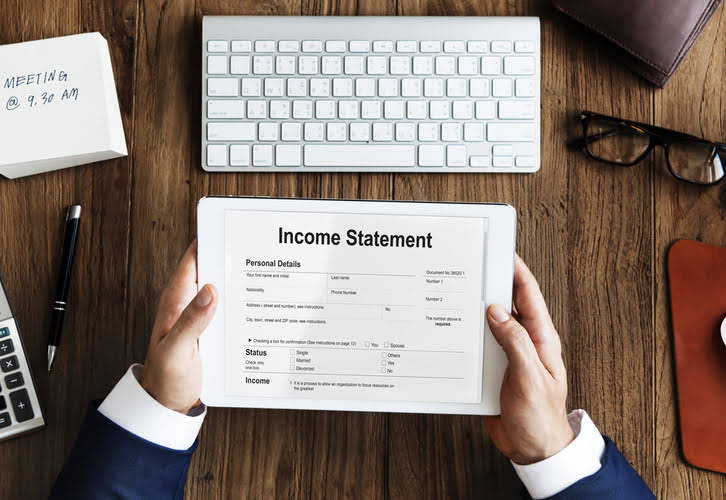
On the date of death, the accounts are closed and the net income for the year to date is allocated to the partners’ capital accounts. Most agreements call for an audit and revaluation of the assets at this time. The balance of the deceased partner’s capital account is then transferred to a liability account with the deceased’s estate. Additional investments and allocated net income increase capital accounts of the partners.
Profit and Loss Distribution
- This is an extension of usual Profit and Loss Account for the purpose of adjusting transactions relating to Partnership Deed.
- A partnership agreement between partners covers their rights and responsibilities while protecting the partner’s contributions.
- All kind of allowances, like salary allowances and capital allowances, are treated as withdrawals.
- It is advisable for partners to consult with legal and financial professionals to navigate these requirements effectively, ensuring that all legal obligations are met and reducing the risk of future liabilities.
- Accounting Treatment – Interest on drawings is profit or gain to the Firm and credited to the Profit& Loss Appropriation Account.
- A partnership treats guaranteed payments for services, or for the use of capital, as if they were made to a person who is not a partner.
A successful partnership can increase the chances that a business will launch successfully by allowing partners to pool their resources and abilities. A partnership agreement can reduce uncertainty when the partners need to finalize any decisions or resolve a dispute4. Attracting new partners can also be challenging if the partnership needs to expand beyond the partners’ existing capacity. The structure can attract prospective partners who do not have prior experience working together. Local authorities may restrict the structure to eligible businesses in knowledge-based industries, for example, legal and accounting professionals. Authorities may require proof of permission from the professional governing body before partners may form an LLP.
Commission to Partners:
For instance, a partner who manages the day-to-day operations might receive a larger share of the profits compared to a partner who is less involved but has made a significant capital contribution. This approach can incentivize active participation and reward partners for their operational contributions. Partnerships come in various forms, each with its own legal and operational nuances. The most common types include general partnerships, limited partnerships, and limited liability partnerships. Understanding these distinctions is fundamental for anyone involved in partnership accounting. A partnership is a business structure that involves two or more individuals who agree to a set distribution of ownership, responsibilities, and profits and losses.

Interest on Capital:
Interest on such advance or loan should be credited to Loan Account or Current Account. P, after having been a sole trader for some years, entered into partnership with Q on 1 July 20X2, sharing profits equally. The dissolution agreement outlines the terms under which the partnership will be dissolved, including the timeline and online bookkeeping the responsibilities assigned to each partner during the process.
Chartered accountant Michael Brown is the founder and CEO of Double Entry Bookkeeping. He has worked as an accountant and consultant for more than 25 years and has built financial models for all types of industries. He has been the CFO or controller of both small and medium sized companies and has run small businesses of his own.

The incoming partner typically buys into the partnership by contributing assets or cash, which is then added to their capital account. This infusion can be a strategic move to bolster the partnership’s financial health or to bring in expertise that complements the existing partners’ skills. The method of allocation can also impact the financial statements of the partnership. For example, if profits are allocated based on capital contributions, the capital accounts of the partners will reflect these allocations, thereby affecting the overall equity distribution within the partnership. This, in turn, influences the balance sheet and the partners’ equity section, providing a transparent view of each partner’s financial stake in the business. Unlike sole proprietorships or corporations, partnerships have unique accounting needs driven by the division of profits, liabilities, and decision-making responsibilities.
- A partnership is a business run by two or more persons who agree to contribute assets to the business and share in the profits and losses.
- We are compliant with the requirements for continuing education providers (as described in sections 10.6 and 10.9 of the Department of Treasury’s Circular No. 230 and in other IRS guidance, forms, and instructions).
- That means that you only need to deal with the appropriations referred to in the question.
- A Debit Balance of the Current account implies that the concerned member has overdrawn his Current account and owes that amount to the firm.
- Staying informed about these tax implications can help optimize the partnership’s tax liabilities and enhance overall financial performance.
- This document typically outlines the specific percentages or ratios by which profits and losses are to be divided among the partners.
- Partnership accounting tracks the financial transactions between partners.
Explore the essentials of partnership accounting, including financial reporting, profit distribution, and partnership accounting dissolution processes. The Uniform Partnership Act only applies to general and limited liability partnerships (LLPs). For example, an LLP must regularly file information reports to local authorities responsible for businesses in the area.


If a retiring partner withdraws more than the amount in his capital account, the transaction will decrease the capital accounts of the remaining partners. The excess of the amount withdrawn over retiring partner’s equity in the partnership is divided between the remaining partners on the basis stated in the partnership agreement. Finally, let’s assume that Partner C had been operating his own business, which was then taken over by the new partnership. In this case the balance sheet for the new partner’s business would serve as a basis for preparing the opening entry. The assets listed in the balance sheet are taken over, the liabilities are assumed, and the new partner’s capital account is credited for the difference. The distribution of profits and losses https://www.bookstime.com/articles/what-are-two-types-of-bookkeeping-methods in a partnership is a fundamental aspect that requires careful consideration and clear agreement among partners.
General partners manage the business and assume full liability, while limited partners contribute capital and enjoy limited liability, protecting their personal assets. This structure is particularly attractive for investors who wish to participate financially without being involved in day-to-day operations. General partnerships are the simplest form, where all partners share equal responsibility for the business’s debts and obligations.
